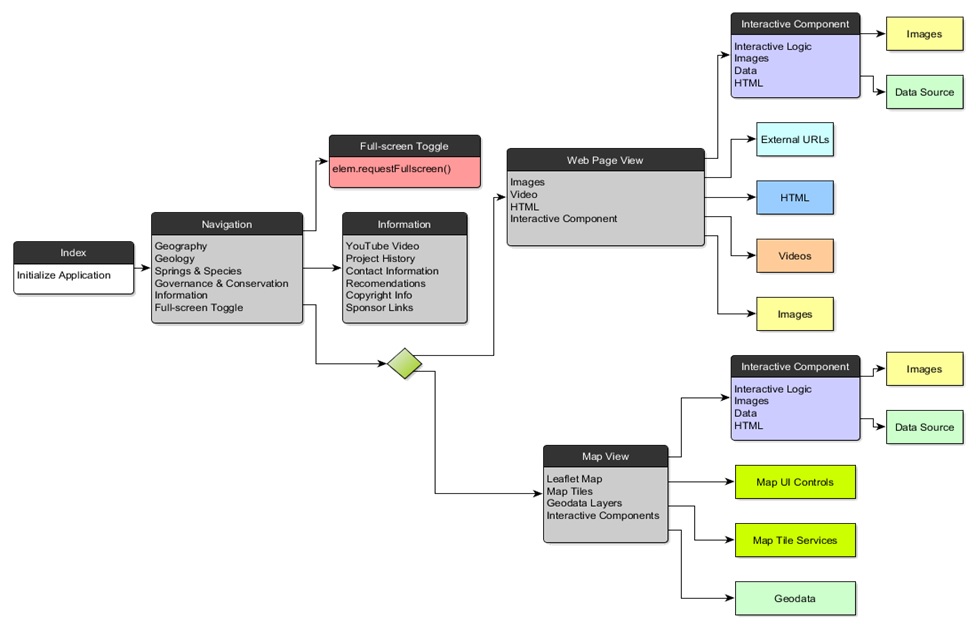Difference between revisions of "Document provenance of results by Suzanne Pierce"
| Line 19: | Line 19: | ||
'''Selecting Data Sets for GPF and Tutorial:''' | '''Selecting Data Sets for GPF and Tutorial:''' | ||
| + | The timeline slowed a little because we decided to request the original data input files from my former graduate student. He copied all of his files from his thesis and mailed them to me on an external hard drive. This reflects a common practice for data sharing and management in geosciences. Frequently, students complete a research project and they keep the data and files on their own machines or resources. When students leave the university setting this base data is frequently lost. We are fortunate that, in this case, my graduate student has remained in contact with me and he was still able to access the files and send them to me. | ||
| + | |||
| + | It's made it clear to me that I need to set up a data sharing and management plan for my research group. | ||
'''Observations on making data public''' | '''Observations on making data public''' | ||
Latest revision as of 17:41, 3 April 2015
Details on how to do this task: Document the provenance of the results
Comments on Progress and planned next steps:
This task has been set aside for a couple of weeks (as of April 3, 2015). I anticipate picking it back up and making progress on it next week, April 8th and hope to complete it by April 15th. The dates have been modified for this task per that expectation.
One nice thing about participating in the GPF process is the external timeline and shared group interactions. It helps me keep this paper on my day-to-day list of priorities and continue to make progress. Often when you are writing a manuscript on your own, it's easy to set it aside or lose momentum. The GeoSoft GPF schedule is helping me tackle the many steps that are necessary to publish interactive/software/complex workflow types of research.
Selecting Data Sets for GPF and Tutorial: The timeline slowed a little because we decided to request the original data input files from my former graduate student. He copied all of his files from his thesis and mailed them to me on an external hard drive. This reflects a common practice for data sharing and management in geosciences. Frequently, students complete a research project and they keep the data and files on their own machines or resources. When students leave the university setting this base data is frequently lost. We are fortunate that, in this case, my graduate student has remained in contact with me and he was still able to access the files and send them to me.
It's made it clear to me that I need to set up a data sharing and management plan for my research group.
Observations on making data public 1) challenge to select and assure that dataset is absolutely correct 2) takes time to document dataset, source and context to be sure it is a standalone object. 3) Coordination among team members is needed to be sure that all the pieces are uploaded 4) There has to be a clear plan and choices for what is necessary 5) bundling and project options on figshare should be useful (but I'm still trying to understand how they work) 6) the free level access on figshare is very good, but the file size limitations are an issue for many file sets (e.g. set of candidate solutions over 1GB limit) - re-structuring uploads and figshare units to accomodate. May need to subscribe to figshare at appropriate level (=long term cost to researcher to keep data up and available) 7) Already see benefits because we know exactly where a dataset is (one that we have to search for all the time) - now it has a persistent place (easy to find)
Tutorial Files, links, workflow
OSGeo4w [1]
Publishing/Sharing datasets
Citation: Pierce, Suzanne (2015): Gridded Shapefile for the Recharge Zones of the Barton Springs segment of the Edwards Aquifer. figshare. http://dx.doi.org/10.6084/m9.figshare.1330145 Retrieved 16:56, Mar 10, 2015 (GMT)
Workflow Sketch
